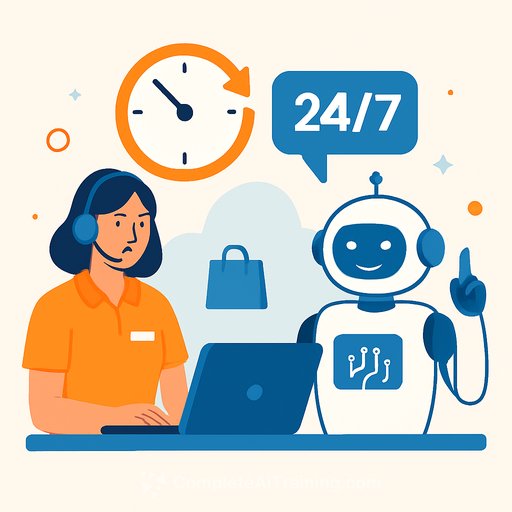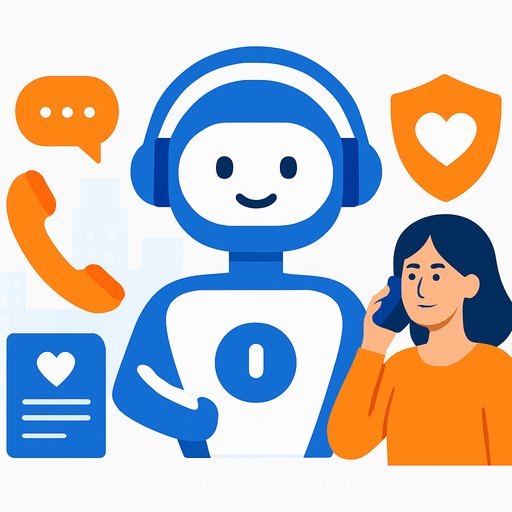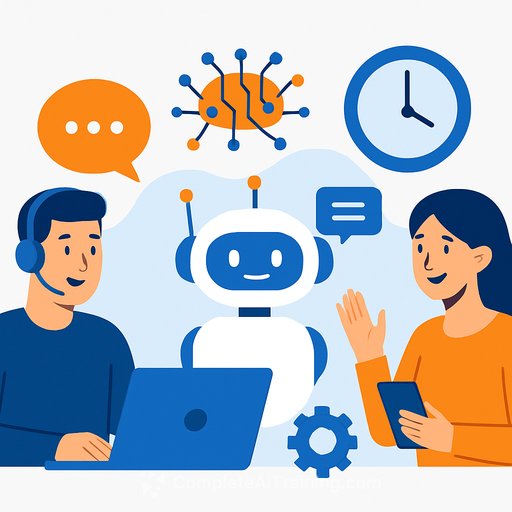In the Age of AI Chatbots, Why Are Companies Still Failing on Out-of-Hours Service?
Customers don't shop on a schedule. They browse at midnight, ask questions over breakfast, and expect answers on the channels they already use. Yet support is still gated by 9-to-5 thinking, even as AI chatbots promise help after hours.
The result: friction, lost sales, and lower trust. As Hodny Benazzi, General Manager, International at CM.com, puts it, "Retail isn't just about in-store interactions anymore; it's about delivering convenience around the clock."
The Persistence of Legacy Service Hours
Support operations were built around office hours. That model lingers, even though retail has shifted to an always-available buying cycle across web, mobile, and messaging. Customers hitting dead ends at 11 p.m. don't return at 9 a.m.-they go elsewhere.
The technology to extend coverage already exists and is cost-effective. What's missing is a mindset reset and the operational glue to make AI, channels, and human agents work as one system.
Closing the Expectation Gap
Consumer expectations have moved. Benazzi notes that 40% of customers now expect 24/7 access to support, and 61% prefer to fix issues through self-service. Chatbots are catching up-answering 61% of queries today vs. 22% in 2022-but many teams still treat them as a bolt-on.
That's where the experience breaks. Customers repeat themselves, context gets lost, and unresolved cases stall until business hours. The promise of convenience collapses under fragmented tools.
What Seamless Out-of-Hours Support Looks Like
The benchmark is simple: unified systems, consistent context, and clear handoffs. If a bot can't resolve the issue, it should push a complete case-history, intent, and attachments-to the right queue without forcing the customer to start over.
Every touchpoint should feel connected, whether it starts on web chat, shifts to WhatsApp, or needs an agent follow-up. Asynchronous threads, not one-off chats, keep momentum through the night.
The Practical Playbook for Support Leaders
- Map out-of-hours intents: Order status, returns, delivery changes, product fit, payment issues, store info. Design flows for the top 10 and expand from there.
- Unify your stack: One platform for chat, SMS, email, WhatsApp, voice, CRM, and ticketing. Shared conversation history and customer profiles by default.
- Design clear bot-to-human handoffs: Pass transcript, metadata, and customer identity. Offer callbacks or scheduled live sessions with time windows.
- Enable secure self-service: Authentication, order lookup, refunds, exchanges, and address updates-without an agent, where policy allows.
- Set after-hours SLAs: First response, resolution, and follow-up times. Make them visible in the UI and meet them.
- Coach your AI: Keep knowledge bases current. Add intent coverage weekly. Review failed bot paths and fix gaps.
- Measure the right metrics: After-hours containment rate, CSAT, FRT, reopened cases, and conversion from service to sale.
- Staff smartly: Follow-the-sun routing, light on-call coverage for escalations, and clear playbooks for priority cases.
- Deflect voice to messaging: Offer customers a switch to WhatsApp or SMS with context carryover to reduce hold times and keep threads alive.
- Support payments and returns: Use secure payment links and policy-driven return workflows to close transactions overnight.
Tech Checklist for Out-of-Hours Readiness
- Channels: Web chat, email, SMS, and WhatsApp Business Platform to meet customers where they are.
- Routing: Intent-based routing with AI triage, language detection, and priority handling for VIPs or high-risk issues.
- Identity: Secure login, OTP, and account linking so bots can access orders, delivery, and warranty data.
- Knowledge and content: Centralized KB with version control; automated answers pulled from a single source of truth.
- Commerce integrations: OMS, CRM, logistics, and payment systems for real actions-not just answers.
- Analytics: Channel-level insights, journey drop-offs, bot failure reasons, and handoff success rates.
- Fallbacks: Queued handovers, scheduled call-backs, and proactive updates so customers aren't left hanging.
Consistency Is the Differentiator
Some retailers extended hours, but consistency is uneven. In a cautious spending environment, reliable support-at any hour-wins trust and repeat business.
The path is clear: integrate systems, treat AI as a core teammate, and design every after-hours journey with context and closure in mind. That's how support stops losing nights and starts earning loyalty.
Next Step: Build Skills That Stick
If you're upskilling your team on AI-enabled support flows, see practical training and certifications for support roles at Complete AI Training.
Your membership also unlocks:






